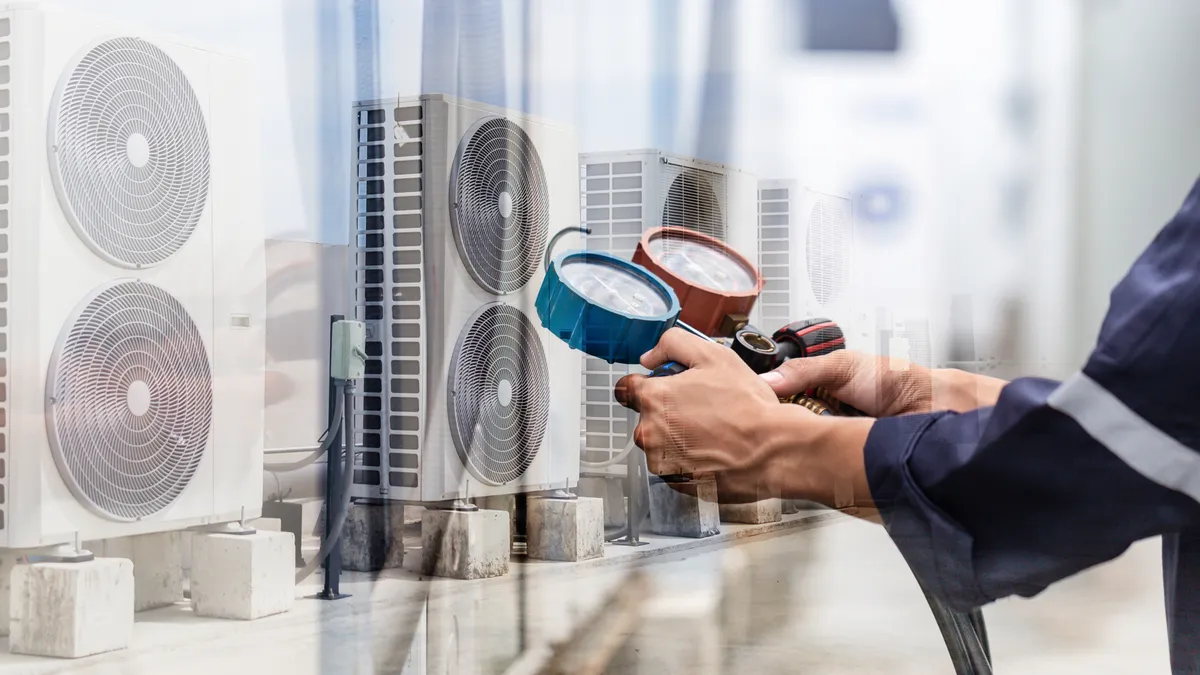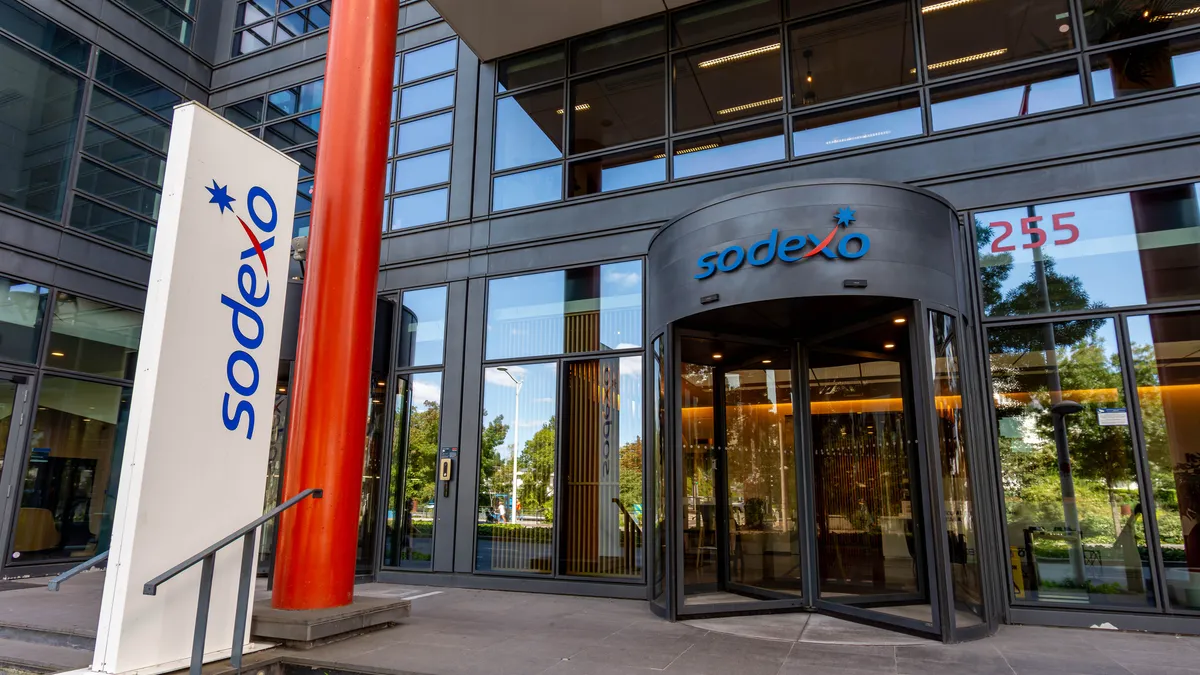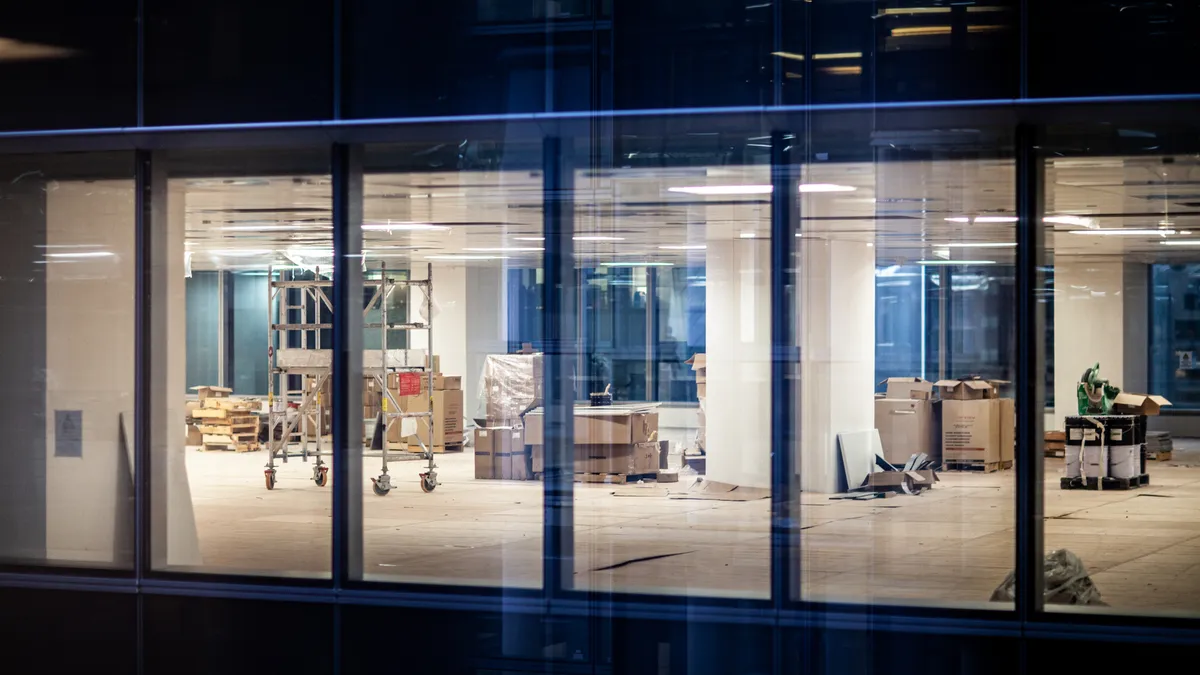Major U.S. HVAC manufacturers are working to capture widespread demand for heating and cooling products and services, fueled in large-part by Inflation Reduction Act funding opportunities for energy-efficiency upgrades, while also balancing American Innovation and Manufacturing Act regulations that curtail the production and use of hydrofluorocarbons, or HFCs.
Johnson Controls has thrown a wrench into the market, exploring the sale of its light commercial and residential HVAC assets, with Robert Bosch GmbH, Lennox International and Samsung Electronics among the firms competing to buy it, Reuters reported.
The potential sale comes as many major manufacturers, including Carrier, Lennox and Trane Technologies, faced year-over-year revenue declines in their residential and light commercial segments during the first quarter, according to their earnings reports.
These three publicly traded companies make up the lion’s share of the U.S. market, and like Johnson Controls, are reaping the benefits of widespread growth across the commercial and industrial HVAC sectors, as facility operators upgrade to energy-efficient HVAC units and integrate system controls to rein in energy use and emissions.
While most of that growth has been skewed toward data center and manufacturing developments, Carrier, Lennox and Trane have noted broad-based growth, from education and healthcare to the transportation and high-tech industrial sectors. At the same time, each company has pointed to a growing degree of complexity in their systems and services, and underscored the vital role that HVAC systems continue to play in building operations.
Here’s a look at each company’s earnings and some key facts that could impact facilities operators.
Carrier
Carrier saw mid-single-digit growth in its Americas HVAC organic sales during the first quarter of 2024, according to its earnings release. This growth was driven by success in its commercial and light commercial segments, which both rose approximately 20%, according to its earnings presentation. This contrasts with a roughly 35% year-over-year decline in orders for the Americas HVAC segment’s light commercial business, while commercial HVAC grew orders approximately 5%.
The company pointed to impacts from its acquisition of Viessmann Climate Solutions in January. The transaction adds 12,000 employees and is expected to strengthen Carrier’s position in Europe’s residential and light commercial space, the company said in a January news release.
In March, Carrier announced that it had reached a definitive agreement to sell its Industrial Fire business to Sentinel Capital Partners for $1.4 billion as part of its ongoing portfolio transformation efforts. The deal is expected to close in the third quarter, per a March 5 news release.
Meanwhile, Carrier’s aftermarket segment, which includes BlueEdge, Abound and Lynx, grew 6% year over year, “led by another quarter of double-digit growth in commercial HVAC,” Carrier CEO David Gitlin said on the company’s first-quarter earnings call. “We now have about 75,000 chillers under a long-term agreement, about 35,000 of which are digitally connected. And our attachment rate reached its highest level ever, 48%.”
Gitlin also cast a spotlight on Carrier’s potential in the data center market, which he said represents a low double-digit percentage of the company’s global commercial HVAC applied business. “We see a tremendous opportunity of increasing this segment to well over 20% of our commercial HVAC sales in the next few years. We doubled our backlog in Q1 alone, and in April, secured further key wins as we optimize the use of our global footprint to support our customers,” Gitlin said.
While the company has a low share of the U.S. data center market, including water- and air-cooled chillers, it is working to maximize production at all of its facilities and grow its capacity, Gitlin added, noting that these efforts include expanding to Mexico, where it already has at least seven manufacturing plants, according to ACR Latino America.
“It’s not like anything we’ve seen. In some cases, we sell a few water-cooled chillers at a time. And here, we’re looking at selling hundreds in a single order,” Gitlin said.
Lennox
Lennox’s business climate solutions segment grew revenue 21% year over year in the first quarter. In its first-quarter earnings report, the company attributed the revenue increase to “production volume, enhanced product mix and continued price excellence.”
The Texas-based company saw a 56% climb in profits for its building climate solutions segment primarily due to price and sales volume increases, Lennox CFO Michael Quenzer said on an earnings call April 24. Quenzer noted that the company’s first quarter profits also reflect a $2 million headwind associated with ramp-up expenses at its new Saltillo Mexico factory, and pointed to ongoing production and supply chain challenges at its Stuttgart, Arkansas factory.
The Saltillo factory, which is on track to begin production in the second half of 2024, will be “a key enabler in normalizing lead times and growing emergency replacement revenue,” Lennox said in an April 24 news release.
Lennox CEO Alok Maskara said the company expects deceleration in new construction and potential project delays, but that order rates and backlog remained strong amid pent-up replacement demand. Maskara noted that the firm has secured wins in national accounts with new integrated offerings made possible from its acquisition of AES in October.
“Insights from our National Account Services team highlight a significant upcoming need for replacements as well as increased interest in our new cradle to grave services,” Maskara said. “Our market share prospects in the BCS segment will be driven by volume from the new Saltillo Mexico factory and our expansion in the emergency replacement market.”
Commenting on potential M&A opportunities, Maskara said the company has sufficient scale to compete and evaluate opportunities as they come by and “a huge big pipeline of bolt-on opportunities as well.”
Discussing the rumored sale of Johnson Controls’ assets, Maskara said, “We have been public in the past about the interest for this asset that is rumored to be on sale and that hasn’t changed either.”
Trane Technologies
Trane Technologies also reported robust performance in the first quarter of 2024. Its bookings increased 21% year over year to $5 billion in the first quarter, led by strength in its commercial HVAC businesses globally, which were up over 20%, according to a May 7 earnings release.
“Bookings in our Americas commercial HVAC business were once again a standout, up 30% with more than 40% growth in equipment and more than 15% in services,” Trane Technologies CEO David Regnery said on an earnings call. The Americas segment’s bookings were up over 60% on a three-year stack, led by Trane’s applied solutions portfolio, “which we estimate carries an 8 to 10 multiplier of high margin services revenue over the life of the equipment,” Regnery said.
The company also saw a mid-teen growth in commercial HVAC revenue and continued to grow its applied solutions business, “as project complexity in top growth verticals plays to [Trane Technologies’] strengths,” per its first-quarter earnings presentation.
“We saw a broad-based growth and it wasn’t concentrated necessarily in any one vertical,” Regnery said. “We certainly have strengthened in data centers. We certainly have strengthened in education, healthcare [and] high-tech industrials.”
Despite a reluctance to pin overall commercial HVAC growth on data centers, Regnery said he believes the company has been “very well positioned in [the] data center vertical for a long time” and noted that data center cooling systems require sophisticated air handling and high-efficiency chillers.
“We may not have every component, but we would have a partner that would have that component,” he said. “[We] would help integrate it into a system that would be operating in an efficient way for the customer.”
“The other thing that’s really emerging … think of it as a thermal management system. When you’re cooling a space, you’re removing heat from it. Data centers have a lot of it,” Regnery added. “How can you repurpose that heat? We’ve done some projects, still early stages here, where we’ve created district heating loops from the heat that would normally just be wasted and reusing it as an asset.”
Aside from data centers, Regnery noted that education is seeing growth related to Elementary and Secondary School Emergency Relief, or ESSER, funding. “We don’t believe that the whole education vertical stops after ESSER funding. There’s also IRA funding that’s available. And there’s, of course, the municipal bond process that’s always been very robust in the past,” he said. “The education vertical has always been strong for Trane Technologies, expected to be strong in the future as well.”
Trane Technologies CFO Chris Kuehn said the company continues to see potential opportunities for value-accretive M&A and expects plans to deploy approximately $2.5 billion in cash in 2024.






















